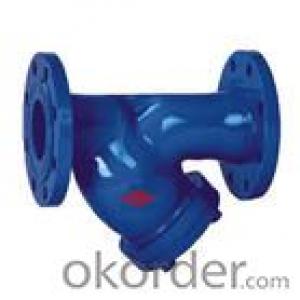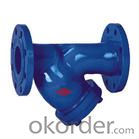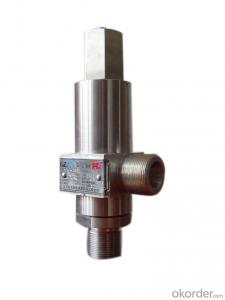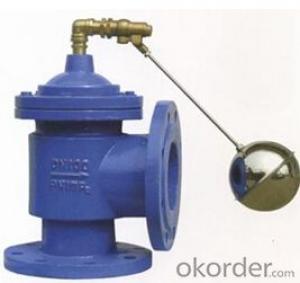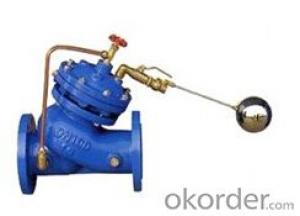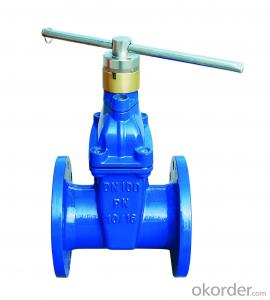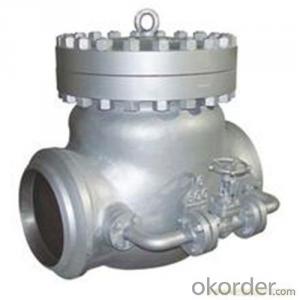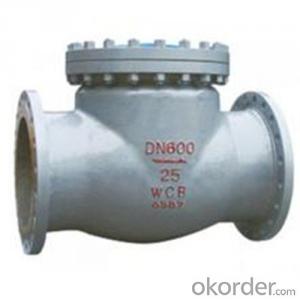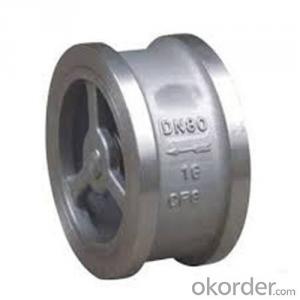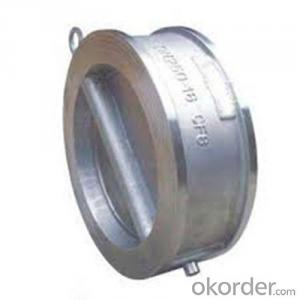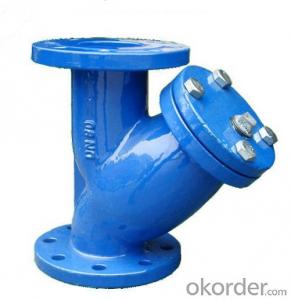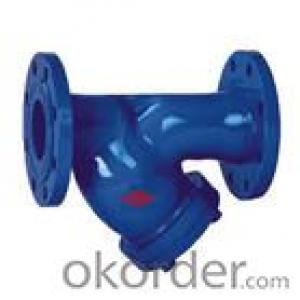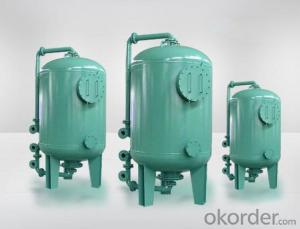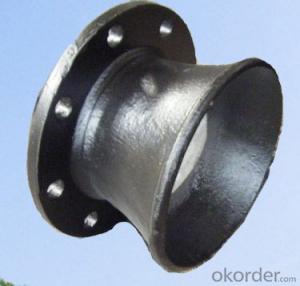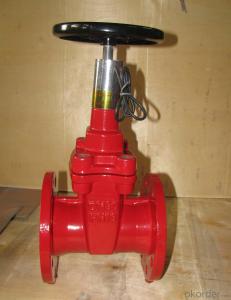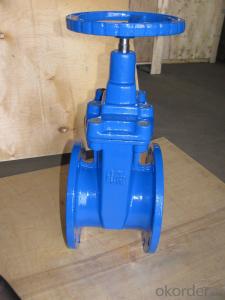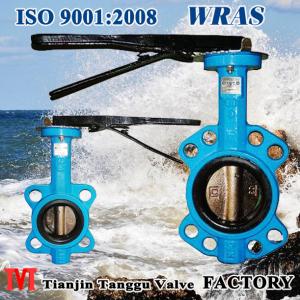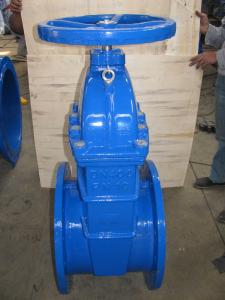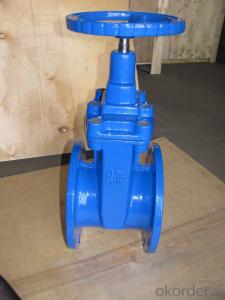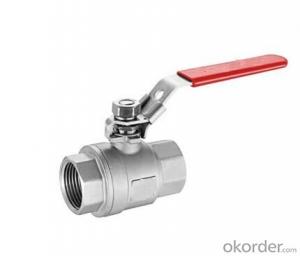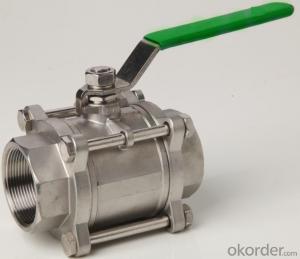Ductile Iron Flanged Y-Strainer
- Loading Port:
- China Main Port
- Payment Terms:
- TT OR LC
- Min Order Qty:
- -
- Supply Capability:
- -
OKorder Service Pledge
OKorder Financial Service
You Might Also Like
Specifications
Double flanged Double Eccentric Butterfly Valve
PN10/16/25
DN100 ~ DN2000
Technical Specifications
- Design and manufacture: EN593, EN1074-1 and 2
- Face to face dimension: EN558-1 Series 14 (DIN3202 F4)
EN558-1 Series 13 (BS5163)
- Flange dimensions and drillling: EN1092-2 PN10/16/25
- Size range: DN100 - DN2000
- Max. working pressure: 1.0/1.6/2.5 MPa
- Inspection test: EN12266
- Working temperature: -15°C to +80°C
- Suitable medium: water
Main Fetures
- Double eccentric disc reduces seal wear and torque
- Body seat ring is welded directly on the body
- Bi-directional flow and low head loss
- Disc sealing ring to be replaceable on pipeline without dismantling the valve
- Body and disc inside and outside epoxy powder coated (min. 250 microns)
- Opening and closing indicators are provided
- Coupling flange for electric actuator in compliance with ISO5211
- Gearbox and electric actuator operation available
Main Parts and Materials
Body and disc: ductile iron EN GJS500-7/400-15
Shafts: stainless steel AISI 420
Body seat ring: stainless steel AISI 304
Disc sealing ring: EPDM or NBR
Retaining ring: stainless steel or ductile iron
Shaft bearing: Du bushes (self lubricating bushes)
- Q: The tricuspid valve is closed: a. during the rapid filling of the ventriclesb. when the mitral valve is openc. during ejection of blood from the ventriclesHelp plzThank you!
- c
- Q: I recently had an echo and they said their was a slight tricuspid valve leak but it was 19 and anything less than 20 is considered normal. I have no clue what that means. Does any one have and clue on what scale she was talking about. Also she stated that the machine are so sensitive these days that the majority of people are found to have some sort of leak. Is this the case??????
- finding on the severity of the valve situation it fairly is severe. If it have been severe you certainly could have indications that could assist you recognize previous to now. Ask the physician how severe the valve insufficiency is. A mitral valve prolapse could make you sense mild headed. The tricuspid valve insufficiency could convey approximately severe issues. There are various circumstances that would reason this. it fairly is great to your heart professional to describe your situation. In any experience it fairly is no longer something to fool around with or placed off. while you're actually not chuffed with the solutions do no longer hesitate to get a 2d opinion.
- Q: is it possible to check valve to piston clearance with out taking the heads off? I want to buy a bigger camshaft for my 351 windsor stock pistons with 1970 heads. cam is 230 duration (280) and 512 lift
- put cylinder one at top dead center. then compress valve down till it makes contact with the piston. not accurate because hydraulic lifters will pump up during engine operation
- Q: I own a 2001 Chevy cavalier Z24 with a dual cam... Just got it tuned up and noticed oil in my spark plug sockets, which leaves me to assume either the valve cover gaskets or the cam carrier gasket is leaking oil... I would prefer to so this by myself considering I'm sure it's going to be costly.. Anyone have any ideas on how I go about replacing either?
- valve cover shouldn't be that much of a problem as long as you have some basic tools and some mechanical ability. Take it that its a 4 cylinder car, the size of the motor is very helpful when looking for tips. Just don't over torque your bolts when replacing. 89 in lbs is about normal on gm's valve covers
- Q: can a person survive with only one heart valve functioning?
- This Site Might Help You. RE: how many valves does a human heart have? can a person survive with only one heart valve functioning?
- Q: My car had white smoke coming out from the exhaust.After talking to my mechanic, he said that the valve seat is faulty in which i suspected earlier. He also told that my car need to be overhauled. What would a faulty valve seat cause my engine?
- It's the doctrine of alternative and end result. You made unhealthy offerings and are actually paying the penalties. If you had constant the EGR valve proper whilst the investigate engine gentle got here on, you do not need had the tickets. Cost of an EGR valve is beautiful small. But you selected now not to try this. When the plate ran out, you knew it was once out, and made the alternative to hold riding. When you obtained the primary price ticket you might have stopped then, and constant the vehicle and obtained present so there could be no MORE tickets. Again you made a alternative now not to try this, and hold riding, and get extra tickets. How lengthy could it have taken for you, or your husband, to make a sensible mobilephone name to the courts and give an explanation for your clinical situation? The courts could have gladly given you an extension to your look. But once more you made a alternative to disregard it till there was once a warrant on your arrest. Even now you've gotten made a alternative to invite a number of strangers at the Internet as an alternative than name the courtroom approach or authorized help to discover your choices. So, welcome to the exclusive global of penalties. Good Luck.
- Q: Does the new valve get glued or anything or do I just put it on tightly? I cannot tell if the existing valve is glued on or not.
- Is the new valve or the old valve the compression type? If the old valve is then as you take it off you will discover if it is glued (I doubt a compression valve is also glued). Replace the old valve with the same type as the old one. That is always a good rule of thumb to follow. Put it on tightly but DO NOT over-tighten it. 1/4 turn past tight it usually tight enough. I am not a big fan of compression fittings in either copper or cpvc. You may wish to put a glued valve on, if you already have the cleaner, the primer, and the glue, other wise the expense of the materials does not warrant their purchase for the changing of one valve.
- Q: where is the fuel tank selector valve located on the truck?
- Located under the LH center of vehicle, on LH frame rail
- Q: i have a 04 kia sadona i have been having issues with the van overheating someone told me to open the bleeder valve and let it drain then refill leave the valve open and if i see bubbles in the radiator than its a blown head gasket. is this true? is there a bleeder valve on this and if so where is it located? its not on the thermostat housing i allready replaced the thermostat.
- Remove the radiator cap when cold and run the engine. Have someone rev the engine while the transmission is in park (with the parking brake ON), and you watch in the top of the radiator for bubbles. It may take a few seconds from the time they rev till the bubbles rise to the top.
- Q: I have just been diagnosed with a Mitral Valve disorder. The Doc's notes say Trace Center Regurgitation. Also Trivial Tricuspid Regurgitation. In simple terms, what do these things mean, what causes it, and how do you treat it?
- If there is regurgitation but it's minimal, you likely have little to worry about. Mitral Valve disorder is commonly known as a heart murmur. Many people have them. It's only when there's regurgitation involved that it becomes more complicated. Since yours is trace and trivial it definitely requires investigation. At some point they may want to do a repair of the valve or a replacment but that depends on the degree of regurgitation. Regurgitation simply means that the valve does not close properly when the heart pumps out blood. It is the abnormal leaking of blood from the left ventricle, through the mitral valve, and into the left atrium, when the left ventricle contracts, i.e. there is regurgitation of blood back into the left atrium. Treatment will depend on the severity of the regurgitation so it's something you'll need to discuss with your doctor/specialist.
Send your message to us
Ductile Iron Flanged Y-Strainer
- Loading Port:
- China Main Port
- Payment Terms:
- TT OR LC
- Min Order Qty:
- -
- Supply Capability:
- -
OKorder Service Pledge
OKorder Financial Service
Similar products
Hot products
Hot Searches
Related keywords
